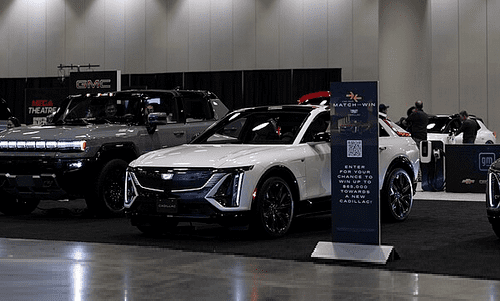Toronto, Ontario — In this weekly electric and autonomous vehicle report, Waymo’s self-driving vehicle was set on fire. Meanwhile, Chrysler reveals its latest new electric concept car.
Waymo on fire
In San Francisco, on the evening of February 10, a crowd vandalized a Waymo self-driving vehicle by setting it on fire with a firework around 9 pm local time.
According to Waymo, a member of a crowd broke the car window and threw a firework inside, causing the vehicle to ignite. Waymo didn’t specify why the crowd attacked the vehicle.
Fortunately, there were no passengers in the vehicle at the time, and no injuries have been reported.
Video footage circulating on social media captured the self-driving vehicle engulfed in flames causing a thick cloud of black smoke.
Waymo has told the public that they are working closely with local safety officials to respond to the situation. Meanwhile, the San Francisco Fire Department has turned the case over to the police for investigation.
The San Francisco Fire Department shared images on their social media of the charred remains of the vehicle, confirming that it was indeed a firework that was the cause.
This event follows another recent incident from the week before the incident, where a driverless Waymo vehicle collided with a cyclist in San Francisco, resulting in minor injuries. The state’s auto regulator is currently reviewing this incident.
Chrysler’s Halcyon debut
Chrysler has introduced its latest electric concept car, the Halcyon which uses augmented reality and follows commands, but also provides passengers with an interesting way to view the stars.
The Halcyon is equipped with level 4 autonomous driving capabilities that can predict the driver’s destination and can retract the steering wheel and pedals when needed. Additionally, using the Memory Landmark feature, the AI assistant can memorize the drivers history and locational preferences.
Looking towards the future of green energy, Halcyon is prepared to use Dynamic Wireless Power Transfer technology that enables wireless recharging on specifically equipped road lanes once this concept is introduced.
Additionally, Halcyon anticipates incorporating lithium-sulfur EV batteries that reduce carbon emissions by not using nickel, cobalt or manganese.
Inside Chrysler’s Halcyon, eco-friendly materials are used such as laser-pattern Solar White suede on the upper seat and door areas, seatbacks wrapped in Solar White synthetic trim, a non-leather synthetic trim around the lower seats, and polyester fabric for the accents.
The cockpit features a transparent display from pillar to pillar providing essential information while staying focused on driving. There’s also a 15.6-inch console, fully controlled by voice commands which can be rotated or stored away as necessary.
On the outside, Halcyon has a sleek elemental silver colour that features LED headlamps, wide-opening doors, and automatic adjustment features for the glass canopy and seats, allowing passengers to recline for the best view in Stargazing mode. Here, the augmented-reality windshield head-up display projects information about stars and constellations, turning Halcyon into a moving stargazing observatory.
Chrysler plans to launch its first electric vehicle in 2025 and aims for an all-electric lineup by 2028. The Halcyon aligns with Chrysler’s goal of reducing carbon emission and leading the transportation industry by achieving net carbon zero by 2038.
The post EV/AV Report: Self-Driving vehicle attacked; while Chrysler looks to the stars appeared first on Collision Repair Magazine.































